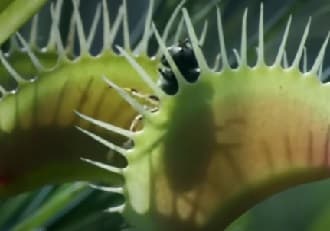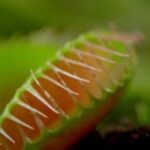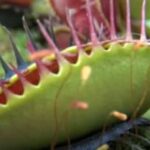As an Amazon Associate, this site earns commissions from qualifying purchases. For more details, click here.
Hey plant lovers! Get ready to dive into my world of Venus flytraps! In this guide, I’ll spill the secrets on how to nurture these captivating carnivorous plants right in the cozy confines of a terrarium. Let’s embark on this adventure together and uncover the ins and outs of caring for these fascinating flora.
Key Takeaways:
- Terrarium Choice Matters: Selecting the right terrarium is crucial for Venus flytrap success. Opt for a container that balances humidity and airflow, such as a glass terrarium with a lid or an open-top container.
- Healthy Venus Flytrap Selection: When choosing your Venus flytrap, prioritize specimens with vibrant foliage and numerous traps. Healthy plants are more likely to thrive in their new environment and provide endless entertainment.
- Regular Maintenance is Key: To ensure your Venus flytrap continues to flourish, regular maintenance is essential. This includes feeding them small insects, keeping the soil moist but not waterlogged, providing appropriate lighting, and performing periodic trimming and repotting.
Setting Up Your Terrarium
First things first – let’s talk terrariums. Finding the perfect home for your Venus flytrap is key. I recommend a glass terrarium with a lid or an open-top container to maintain just the right amount of humidity and airflow. Think of it as creating a VIP suite for your plant.
Now, onto the star of the show – your Venus flytrap! When picking out your plant, go for the gold. Look for one that’s bursting with life – healthy foliage, plenty of traps at the ready. Scout out your local nursery or browse online for the cream of the crop.
Alright, folks, let’s talk about setting up the ultimate Venus flytrap terrarium. Picture this: you’ve got your hands on one of these carnivorous beauties, and now it’s time to create the perfect environment for it to thrive. Trust me, it’s easier than you think!
First things first, let’s gather our materials. You’ll need a container for your terrarium. I recommend a glass one with a lid or an open-top setup to balance humidity and airflow. It’s like creating a little greenhouse for your plant pal.

Putting Venus Flytraps in Your Terrarium
Now, let’s lay down the groundwork – literally. Start by adding a layer of pebbles or gravel to the bottom of your terrarium. This will ensure proper drainage, so your Venus flytrap’s roots don’t get waterlogged. Think of it as building a solid foundation for your plant’s new home.
Next up, let’s whip up a cozy bed for your Venus flytrap to snuggle into. Mix together some sphagnum moss and perlite to create a nutrient-rich growing medium. This combo will keep the soil moist but well-drained, just the way your plant likes it.
Once your terrarium is all set up, it’s time to introduce your Venus flytrap to its new digs. Gently place the plant in the center of the terrarium, making sure its roots are nestled comfortably in the soil. It’s like tucking them in for a cozy nap – they’ll thank you for it!
Now, let’s talk about placement. Venus flytraps love bright, indirect sunlight, so find them a spot near a window where they can soak up those rays without getting scorched. Just be sure to avoid placing them in direct sunlight for too long – nobody likes a sunburn!
And there you have it – your very own Venus flytrap terrarium! With a little love and care, your plant will thrive in its new environment, snaring bugs and captivating onlookers with its unique charm. So go ahead, get creative, and watch your terrarium come to life with these fascinating carnivorous wonders.
Related. Growing Herbs with Venus Flytraps
Feeding Your Venus Flytrap
Now, onto feeding time. While Venus flytraps can snag their own snacks, they’ll appreciate a little extra TLC from you. Treat them to small insects like fruit flies or ants every week or two. It’s like hosting a mini bug buffet – they’ll love you for it!
Water. Keeping your Venus flytrap hydrated is key to its happiness. Keep the soil moist, but not soggy, using distilled or rainwater to avoid any mineral mishaps. Check in regularly to make sure your plant isn’t feeling parched – they’ll thank you with lush, green foliage.
Maintenance Tips
Let there be light! Venus flytraps thrive in bright, indirect sunlight. Find them a sunny spot near a window, but steer clear of those scorching rays – they’re not fans of sunburns any more than we are. Experiment with different spots until you find the perfect balance.
To keep your Venus flytrap in tip-top shape, a little maintenance goes a long way. Trim away any dead traps every few months to keep things looking fresh. And don’t forget to give them a new pot to stretch their roots every year or so – it’s like giving them a little plant spa day!
What is the Best Terrarium For Venus Flytraps?
rust me, finding the right home for these carnivorous cuties is key to their happiness, and I’ve got the inside scoop on what works best.
So, picture this: you’ve just brought home your very own Venus flytrap, and now you need to create the perfect environment for it to thrive. That’s where the terrarium comes in.
When it comes to terrariums, I’ve found that glass containers are the way to go. They give you a clear view of your plant pal and create a mini ecosystem that’s easy to monitor. Plus, they’re pretty stylish if I do say so myself!
Now, here’s the real kicker – the lid. You’ll want a terrarium with a lid or an open-top setup. Why? Because Venus flytraps love their humidity, but they also need some airflow to keep things fresh. It’s like finding the perfect balance between cozy and breezy for your plant friend.
Think of your terrarium as a little greenhouse, where your Venus flytrap can bask in the warmth of filtered sunlight and enjoy just the right amount of moisture in the air. It’s like creating a spa retreat for your plant – who wouldn’t love that?
So, there you have it – when it comes to terrariums for Venus flytraps, glass is the way to go, with a lid or an open-top setup to keep things comfy and breezy. With the right home, your Venus flytrap will be living its best life in no time.
Can Venus Flytraps Really Grow in Terrariums?
Absolutely, Venus flytraps can thrive in terrariums! In fact, terrariums provide an ideal environment for these fascinating carnivorous plants to flourish. Let me break it down for you.
Terrariums offer controlled conditions that mimic the natural habitat of Venus flytraps. These plants originate from boggy areas with high humidity levels, and terrariums allow you to recreate that environment indoors. The glass walls of a terrarium help to trap moisture, creating a humid microclimate that Venus flytraps love.
Additionally, terrariums provide protection from drafts and fluctuations in temperature, which can stress out these sensitive plants. This stable environment allows Venus flytraps to focus their energy on growth and trap production rather than adapting to changes in their surroundings.
Furthermore, terrariums can help to regulate watering, ensuring that the soil remains consistently moist without becoming waterlogged. This is crucial for Venus flytraps, as they require high levels of moisture to thrive but can suffer if their roots sit in standing water.
Finally, terrariums offer a convenient way to control lighting conditions. Venus flytraps thrive in bright, indirect sunlight, and terrarium placement near a sunny window can provide the perfect amount of light without exposing the plant to harsh, direct sunlight that could cause leaf burn.
So, if you’re considering growing Venus flytraps, don’t hesitate to give them a home in a terrarium. With the right setup and a little TLC, these captivating carnivorous plants will reward you with their stunning beauty and insect-catching prowess.
Conclusion
And there you have it – your very own Venus flytrap terrarium! With a bit of love and a sprinkle of know-how, you’ll be amazed at how these carnivorous wonders thrive right before your eyes. So, roll up your sleeves, get your hands dirty, and prepare to be mesmerized by the magic of nature. Happy planting, my fellow green thumbs!

My fascination with carnivorous plants began many, many years ago with Venus Fly Traps. Now I am more than happy to impart what I know with other enthusiasts and those who are curious about meat eating plants.


